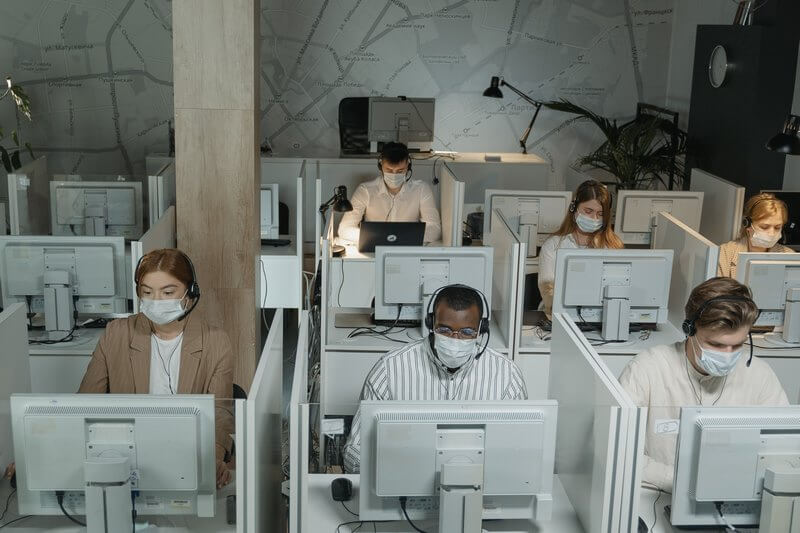
Returning employees to offices during COVID
Emergency return to work during COVID is a challenging proposition. Many of you shared having employees working in offices throughout the pandemic. For the most part, the employees and contractors accessing offices are considered essential employees that need to continue critical functions. Often, crucial personnel fulfills key continuity roles. Some of you are in manufacturing or retail services organizations that require ongoing in-person presence.
This week’s extreme weather in the Northwest and British Columbia highlights the hazards of non-essential employees who want to return to an office. If your organization returned your employees already, this is not an issue. Those ramping up to bring back your staff should consider enabling a process to get employees into an office on a short-term basis.

Safety and security are your top concerns
The record-breaking heatwave smashed hundred-year records in the Pacific Northwest and Canada. As with Texas extreme weather events in February, the West Coast finds itself unprepared to deal with the impacts. Reports are in the news of melting power cables, damaged roads, and overflowing cooling shelters. The area does not have the infrastructure to address this hazard type. We can debate the reasons, but increasingly we are being asked to respond to crises in unprecedented ways.
We are still in COVID-19 response mode, with an uncertain forecast ahead of us. These circumstances demand our flexibility to respond to an increased demand for our services. Everything we do right now is in the context of the ongoing pandemic. Ensuring employees who come into an office follow existing protocols and return to a safe environment is critical. As many facilities managers know, it is not as simple as flipping on the lights, even if some essentials are in the office today. An increasing concern in urban areas is adequate security resulting from civil unrest and other trends. Rural locations can suffer from disuse and isolation.

Establish a short-term process
If you have not done so, I suggest developing a process for an emergency return to work during COVID. Not only will it prepare you for natural hazards, but it will also serve as a blueprint for potential re-escalation. Experts are warning that we may see escalating cases due to the spread of the coronavirus variants. So, having a procedure in place to respond to other crises during COVID is prudent planning. Make sure to map it out and communicate it.
The process should be realistic and developed with your partners in the business. After Isaias impacted the East Coast last year, I realized that we had to be agile enough to respond to crisis events on multiple fronts. Not only did we have to continue the COVID-19 response, but it was vital to build an approach that factored in others incidents. As I shared in my podcast with IFMA Boston last year, Returning to the Workplace Amidst COVID-19, bringing employees is a challenging endeavor. Executing on this adds another layer of complexity. Your procedure should factor in the timeline, necessary approval processes, security, safety, facility considerations, and business needs.

Fully virtual employees are at risk
Not only your office-based employees are at risk. Increasingly, post-pandemic planning includes teams either going entirely virtual or working a flexible schedule. Gartner’s Top Security and Risk Trends for 2021 notably identify that trend #6 as “Remote working is now just working. ” Gone are the days when a lucky few were approved to work from home. Working at home is the new norm.
As I pointed out in my blog, COVID-19 The Next Normal Ahead, many employers were shocked at how well most employees shifted to working at home. Our extroverts and leadership may be itching to get back into the office, but most appreciated the increased flexibility. People like the more relaxed lifestyle, ability to focus on caregiving, and not having to commute. With this increased agility in work locations, professionals like ourselves realize that power and network outages are becoming a significant risk to the continuity of operations.

Covid response increased our demand elasticity
With the US Power Grid assessed as being increasingly vulnerable, we need to raise the risk profile of these events in our planning. Cyber attacks are part of the overall risk assessment. With cybersecurity threats increasing in scope and severity, improving our response capabilities in this area makes sense. Traditional business continuity focused on relocation from offices due to a facility, power, network, or natural disaster incidents.
In my experience, the need to relocate people or use hot seats has decreased significantly. Instead, recovery strategies more often include transferring tasks to available personnel or vendors. I saw this trend start several years ago, but it will increase post-COVID. With a workforce primarily working at home, planning should focus on personal and business preparedness measures. Our ability to pivot and forecast changes in support of business response and recovery demands that we build elasticity of demand into our operating models. It is a microeconomic term, but I believe adding the concept to our evolving toolkit promotes resilience.

Prepaing for the worst can bring out our best
As concerning as the worldwide pandemic continues to be, I retain some of my youthful Pollyanna optimism about life. I spent several hours this week on the phone connecting business groups with safety and security teams to help employees suffering from heat and power outages find a comfortable place to work. Although there remains a risk of spreading the virus to staff, we leveraged our established process to limit potential exposures. The effort only assisted a handful of people, but it reminded me of the disaster recovery work I did in the public sector.
There were moments over the last year that I missed being on the front lines. I missed working alongside first responders, feeling like I made a positive difference in the lives of community members. Actively addressing events at a personal level is rewarding. So, I hope you can leverage some of my ideas to assist others.
Although many of us remain socially isolated, we can still support each other through our networks and opportunities like in the Northwest this week to ease suffering. I constantly reminded myself that businesses are composed of people, not nameless or faceless. We all have friends, families, and co-workers that need our care and quick thinking. One of our greatest strengths is the determination we bring to the table from years of business continuity experience.
